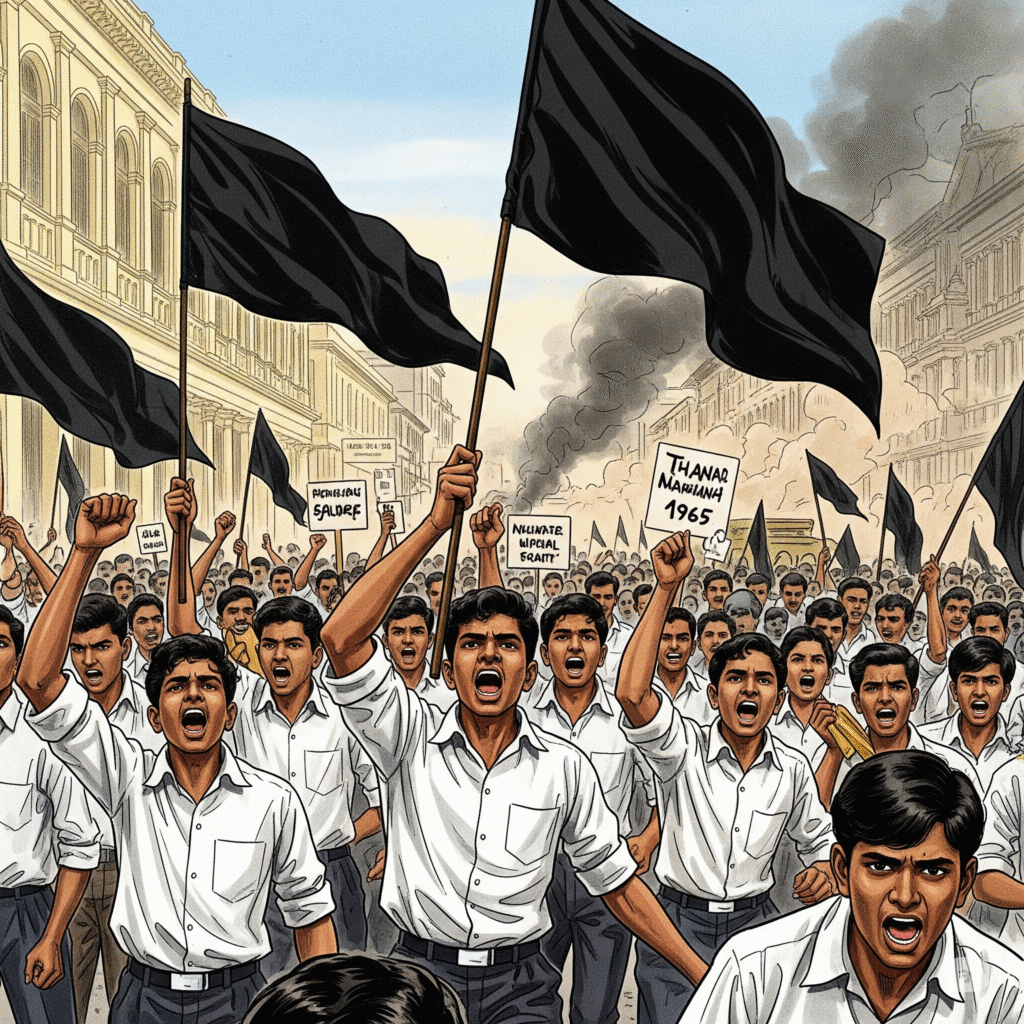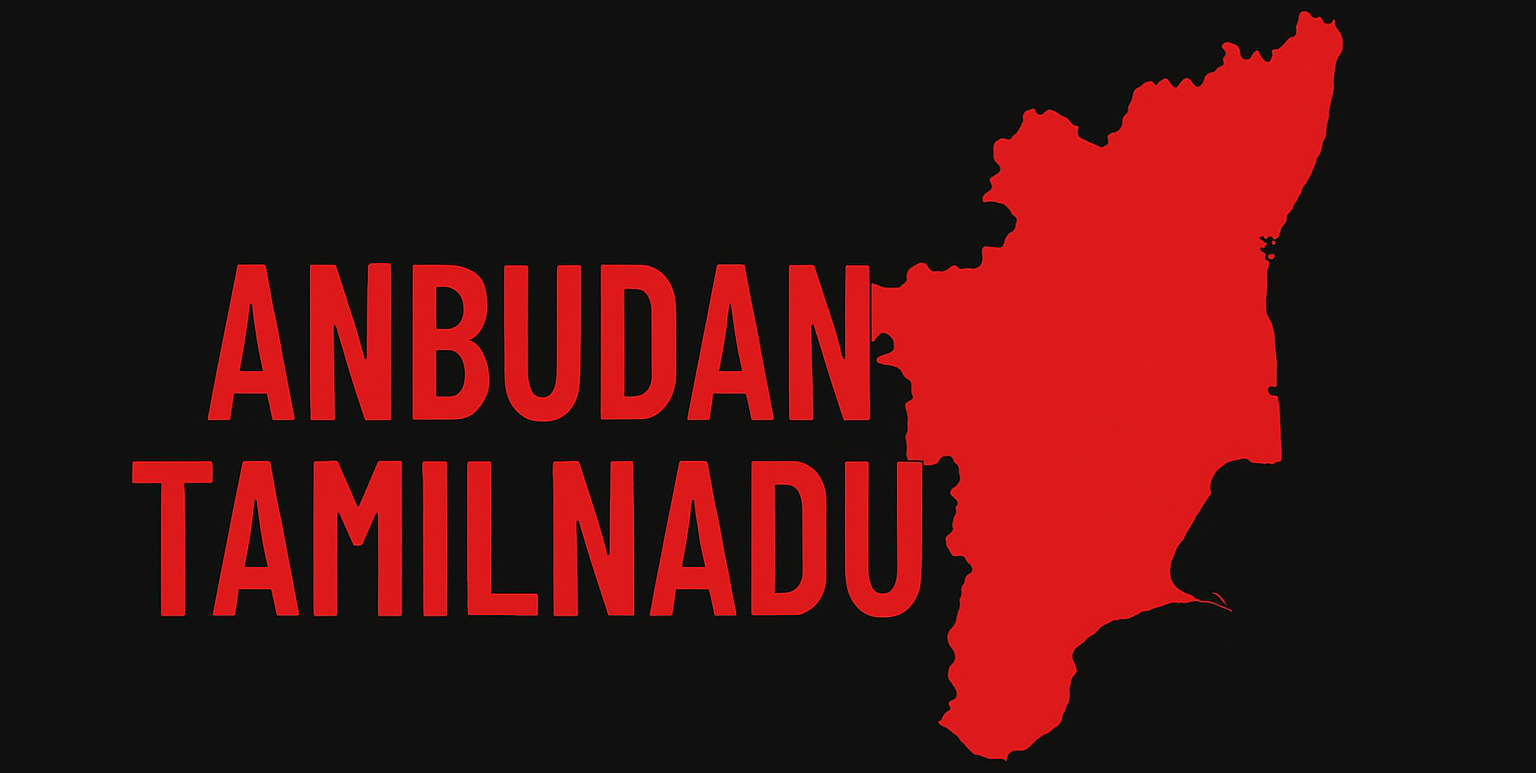The Tamil language has long been more than just a means of communication—it is a powerful symbol of identity, pride, and resistance in Tamil Nadu. Few moments in the state’s modern history embody this spirit as profoundly as the Anti-Hindi Imposition agitations of 1937–39 and 1965–67. These movements marked the people’s fierce opposition to linguistic domination and cultural homogenisation. In both instances, students and youth emerged as the vanguard of resistance, and tragically, several lives were lost in the struggle to protect Tamil. These young individuals are now venerated as language martyrs, whose memory is preserved through official state commemoration, public memorials, and an enduring legacy in Tamil political and cultural discourse.

The 1937–39 Anti-Hindi Imposition Movement
The first major agitation against Hindi imposition began in 1937, when C. Rajagopalachari, then the Premier of the Madras Presidency, introduced Hindi as a compulsory language in secondary schools. This policy was seen as an affront to Tamil identity and a threat to regional autonomy. The Justice Party and its successor, the Dravidar Kazhagam, led by Periyar E.V. Ramasamy, spearheaded the opposition. Periyar viewed the imposition as part of a broader Aryan agenda to subjugate Dravidian culture. The resistance included public meetings, black flag demonstrations, and student protests. Two protestors—Thalamuthu and Natarajan—died in custody, becoming the first recorded martyrs for the Tamil language. Their sacrifice ignited a sense of linguistic self-respect that laid the foundation for future movements and symbolised the people’s refusal to accept cultural subjugation .

The 1965–67 Anti-Hindi Imposition Agitation
Following the expiry of the 15-year transitional period outlined in the Indian Constitution for continued use of English, tensions flared across Tamil Nadu in early 1965. The central government’s plans to make Hindi the sole official language triggered widespread fear that non-Hindi speakers would be marginalised in employment and public life. Massive protests erupted across the state, led by students and youth who feared their future was at stake. Demonstrations were intense and, in some instances, turned violent. Protestors like Chinnasamy, who self-immolated in Salem, became symbols of the ultimate sacrifice for Tamil. Over 60 people lost their lives, including many students shot by police or who died during protests. The agitation shifted the political landscape: the Congress party was swept out of power, and the Dravida Munnetra Kazhagam (DMK) won the 1967 elections on the strength of its pro-Tamil, anti-Hindi platform.
Government Commemoration and State Acknowledgement
The Tamil Nadu government recognises the immense sacrifice of the language martyrs through official observances and memorials. Every year, January 25 is celebrated as Thamizh Moḻi Veerars Dinam (Tamil Language Martyrs Day) to honour those who died during the 1965 protests. Government officials, including the Chief Minister and ministers, participate in wreath-laying ceremonies and floral tributes at memorial sites. Special events are held across schools, colleges, and government offices to educate younger generations about the sacrifices made for preserving Tamil. The state has also erected statues and named institutions after the martyrs, ensuring their legacy remains rooted in public consciousness. These acts are not mere rituals but deeply political affirmations of Tamil linguistic pride and resistance to centralisation.
Enduring Legacy in Tamil Politics and Culture
The anti-Hindi agitations deeply shaped Tamil Nadu’s political identity. When the DMK came to power in 1967, it passed resolutions to guarantee the continued use of Tamil as the administrative language and to oppose any move toward enforcing Hindi as the sole official language of India. These policies solidified Tamil Nadu’s unique federal identity within the Indian Union. Culturally, the stories of the language martyrs continue to inspire Tamil cinema, literature, and public discourse. Political leaders, including current Chief Minister M.K. Stalin, often invoke the memory of these martyrs when affirming the state’s linguistic autonomy. The Tamil Education Minister Anbil Mahesh Poyyamozhi has also taken steps to reinforce Tamil as a medium of instruction while challenging language-based central policies. The legacy of the martyrs continues to shape both policy and public sentiment, serving as a reminder that language, in Tamil Nadu, is not just a tool of communication but a foundation of dignity and resistance.

Conclusion
The Anti-Hindi Imposition movements of 1937 and 1965 were pivotal in asserting Tamil Nadu’s linguistic and cultural autonomy. They were driven not by hatred toward Hindi but by a fierce love for Tamil—a love that inspired young people to sacrifice their lives in defence of their language. The state’s annual observance of Tamil Language Martyrs Day, the memorials, and the political legacy of these agitations ensure that their sacrifices are not forgotten. These movements continue to serve as a moral compass for Tamil Nadu’s political consciousness, reminding future generations of the price paid for linguistic freedom and the unbreakable bond between language and identity.
References
- Subramanian, Narendra. Ethnicity and Populist Mobilization: Political Parties, Citizens and Democracy in South India. Oxford University Press, 1999.
- Hardgrave, Robert L. Jr. “The DMK and the Politics of Tamil Nationalism.” Pacific Affairs, 1965.
- Barnett, Marguerite Ross. The Politics of Cultural Nationalism in South India. Princeton University Press, 1976.
- Pandian, M. S. S. Brahmin and Non-Brahmin: Genealogies of the Tamil Political Present. Permanent Black, 2007.
- Government of Tamil Nadu, Department of Information and Public Relations. Official Records on Tamil Language Martyrs Day Celebrations.
- Anbil Mahesh Poyyamozhi, Madhayaanai – The Rogue Elephant: A Critique of NEP 2020, Anbil Publications, 2025.
- Tamil Nadu State Archives – Reports and Gazetteers on Language Policy and Anti-Hindi Agitations.

